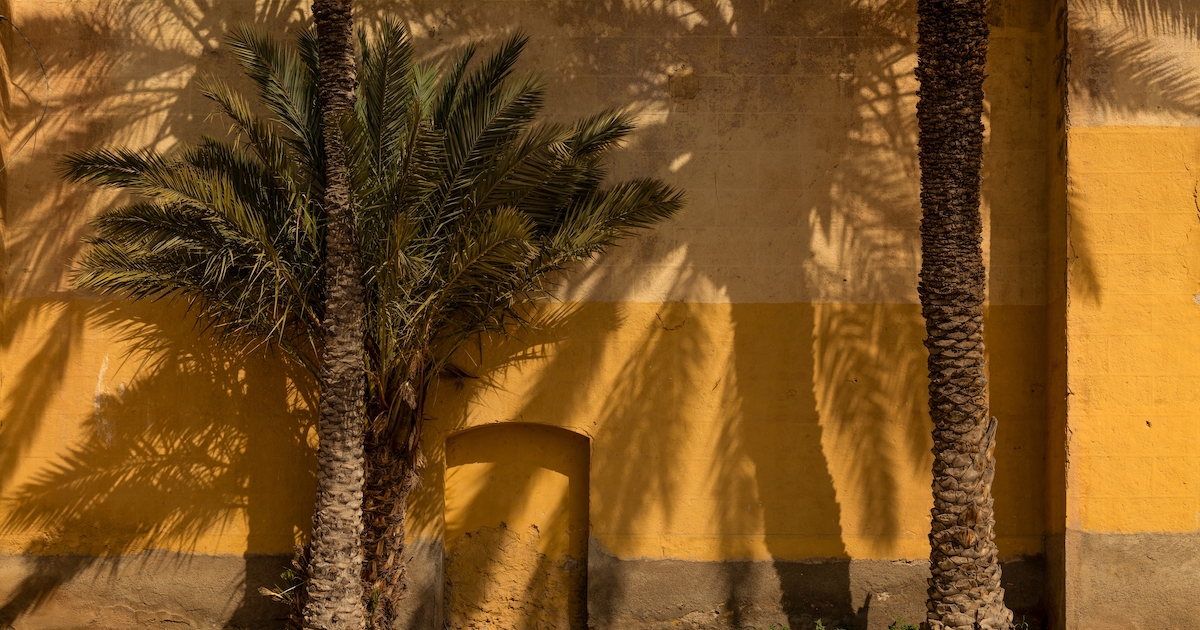It’s in the name: the iconic Palm Springs. But how did the Coachella Valley become the destination desert oasis we know it as today? A blend of history, agriculture, and city planning transformed the area’s relationship with palm trees of all species. Now, anyone can implement palm trees into their personal landscape to cultivate and live out a coveted Southern California dream life. Learn more about the history of the palm tree in Palm Springs and the Coachella Valley to become more connected with our thriving, diverse landscape!
Call the Coachella Valley palm tree experts at Desert Empire Palms to discuss growing your very own iconic Palm Trees!
The Landscape of a Desert Oasis
While palm trees and Southern California seem to be impossible to separate, there is actually only one palm tree native to the western United States: the California Fan Palm. You can recognize this palm species by its tall height, sturdy and straight trunk, and large frond spread (up to 20-30 feet!). The California Fan Palm is climate-hardy, as is needed in the Southern Californian desert. It is also considered an evergreen monocot, so fans remain green all year long. The most noticeable part of the California Fan Palm, however, is often the skirt that forms from dead fronds—why it is also called the Petticoat Palm.
The California Palm has a long, beautiful history rooted in inland Southern California. This legendary history spreads from the Coachella Valley and the San Jacinto Mountains to what is now known as San Bernardino and Riverside Counties. The Cahuilla tribe incorporates the Fan Palm into their mythology, crediting the creation of the palm tree as a gift from an ancestral tribal leader as the first palm tree on Earth. According to this oral tradition, people then came to settle at Indian Wells to live off the gifts the palm trees provide. Early inhabitants of the area ate the fruit of the palm trees, cultivated the edible hearts of palm from its flower buds, made flour from ground palm tree seeds, and made utensils, tools, and goods such as woven blankets, roofs, and even sandals from the fronds. The diverse history of the California Fan Palm is integral to the modern success and everlasting beauty of the Coachella Valley and one to be appreciated.
Cultivating Coachella Valley Date Palm Trees
During the settlers’ boom of the late 19th century following the expansion of the transcontinental railroad in Southern California, the U.S. Agricultural Department began a program to expand crops around the country, imported from “agricultural explorers” around the world. Agriculturists visited Algeria, Iraq, and Egypt, discovering that the Coachella Valley was a similarly perfect climate to grow the date palm shoots they returned with. Blending beautifully with the native California Fan Palm, several species of date palm trees soon rooted permanently in the area.
Now, more than 90% of dates harvested are grown from date palm trees in the Coachella Valley! The Medjool Date Palm is the most popular date palm, and one of the more popular palm trees for personal use because of its versatility and climate hardiness. You can have a descendant of Coachella Valley history growing on your own property!
Palm Springs Iconic Palm Tree-Lined Streets
Beyond native, naturally growing palms, and agricultural palms, there is one more obvious use of the palm tree in the Coachella Valley. The aesthetic value of the palm tree is also high on the list, and there is nothing more aesthetically iconic than the palm tree-lined Palm Canyon in Palm Springs.
The implementation of the Mexican Fan Palm into downtown Palm Springs was no accident. In the summer of 1949, Palm Springs councilwoman Ruth Hardy dedicated 300 palm trees to Palm Canyon with a dedication celebration as a means to renovate the area and attract celebrities and tourists alike. Her hopes that Palm Springs would become a worldwide desert oasis destination were realized, and Hardy’s idea transformed the valley into its iconic status we know today—all because of the palm tree!
Growing Very Own Palm Trees in The Coachella Valley
You don’t need to have a historical connection to palm trees to enjoy all they have to offer. However, knowing that the connection between the Coachella Valley and the palm tree is rooted in thousands of years of history can inspire your use of the palm tree to deeper meaning. In fact, Desert Empire Palms is integral to this history, as we are 4th generation owned palm growers, nurturing and producing the same trees as our ancestors. Take the opportunity to implement the palm tree of your choice into your landscaping and honor the beauty of the very special palm tree with Desert Empire Palms.
Live outside of Southern California? We are proud to offer cross-country delivery services with primary service to the Southwestern United States. Bring a Palm Springs desert oasis to you— Call our palm growers today!
